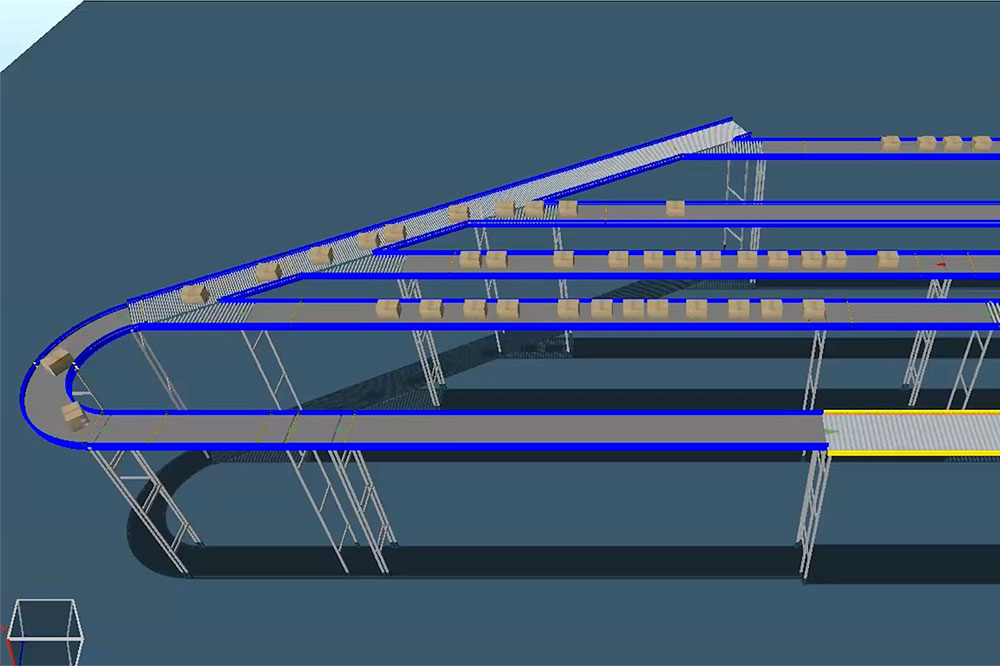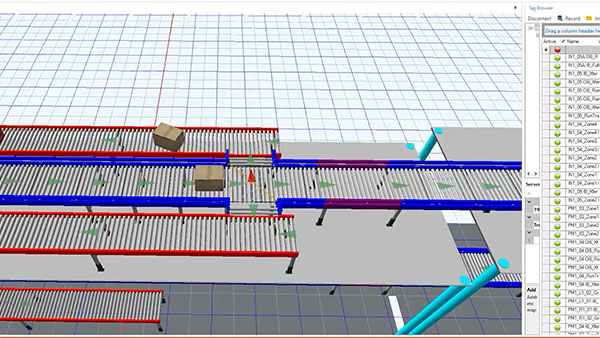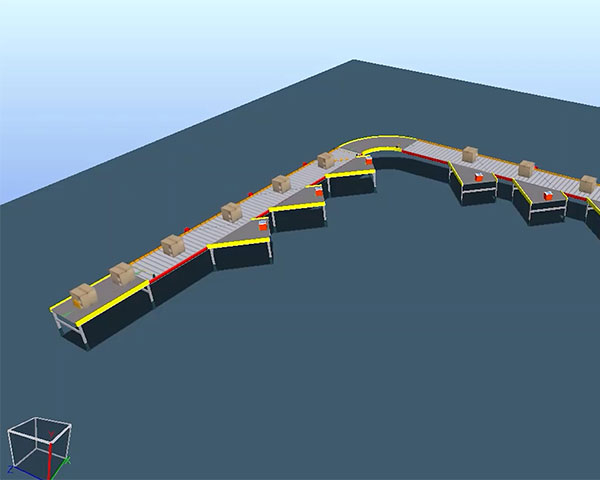
More than a 3D Model: Emulation “Digital Twin” Warehouse Visualization
Bryan Evans | 20 October 2021
In the world of automated and material handling systems integration, time is money and using time efficiently is the key to success. We are continually tasked with achieving more results in less time, whether that be in reduced engineering design time in the office, condensed panel build and installation schedules or accelerated commissioning and testing on site. It sure would be nice if there was a single tool that could address all these asks and more, wouldn’t it?
There is. Enter the concept of the “digital twin.”
Automated Warehouse System Visualization
What is digital twin technology? “Digital twin” is just what the name implies, a virtual copy of the conveyor system that lives in a computer-generated world created by an emulation software package. While these emulation software packages come in many flavors - some are available off the shelf while others may be developed in house for customized applications - Bastian Solutions has adopted Emulate3D as a standard engineering tool within the controls design process.
Using emulation software allows us to take the traditional mechanical CAD model of the conveyor system, generate a realistic three-dimensional representation of the system and then populate it with actual moving product totes and cartons. Finally, by mating this digital twin with our actual machine code, running on the same PLC that will be installed onsite, we are able to capture the time efficiencies listed previously along with other benefits such as continuous product improvement, increased employee safety and increased engineer morale.
Emulation and Automation Controls Commissioning
Let’s take a closer look at some of the individual benefits derived from using the digital twin environment over the course of a typical project.

Traditionally the commissioning phase of a large-scale integration project is the first time that controls engineers can download their code into the processors and see what works and what doesn’t. All the double checking and peer reviewing in office can certainly help to minimize errors but still the controls engineers are often faced with a heavy travel schedule and long hours onsite. By utilizing the digital twin for virtual commissioning controls engineers are now able to run and test their code from the comfort of the office. When it is time to travel onsite, controls engineers can now be confident in their code and trip durations can be shortened thereby reducing travel costs and improving the engineer’s work-life balance!
Virtual Access
Virtual commissioning through the digital twin allows us to take controls commissioning off the critical path in the project schedule and start testing sooner. Historically controls testing and commissioning has always been the last piece in the project puzzle and has, for better or worse, been at the mercy of any upstream delays. Anything and everything from severe weather that impacts building construction readiness to manufacturing delays that impact parts availability has been known to squeeze the available time for controls commissioning before a planned system go live. Additionally, the advantages of being able to validate prior to final installation have become even more evident recently with the supply chain issues and microprocessor chip shortages that are happening around the world this year.
Validation of Hardware Configurations
Along with the opportunity to rethink the schedule for controls commissioning, the digital twin environment allows controls engineers to rapidly validate code against multiple hardware configurations (test early, test often!) to derive the best solution for an end user. In the case of validating a sawtooth merge engineers now can quickly adjust sensor locations and run multiple, iterative tests without waiting for an electrician to physically move the sensor for each test. This also benefits the installation team because device layout drawings can now be provided with sensor locations so precise that they only need to be installed once. 
Offline Testing: interface, displays and routing sequences
On top of this installation benefit, controls engineers can connect the digital twin model and the controls PLC to the internally developed SCADA and HMI programs as well as our Exacta WMS software. Adding these packages in to the digital twin environment allows for the offline testing of things such as operator interface screens, KPI displays and package routing. By using virtual commissioning and testing from end to end, controls engineers can travel to site confident in their code and able to transition quickly into acceptance testing thereby reducing the required time on site, taking the installation to beneficial use much more quickly than before.
Standardization and Efficient Training
Although we’ve focused mainly on the commissioning benefits of the digital twin environment thus far, we can’t overlook the benefits that it can provide in the areas of standardization and training as well. By saving completed system emulation models into a library for future use controls engineers can work on continuously improving our core PLC code to develop the most efficient and robust logic modules to support the material handling solutions that Bastian Solution provides.
These completed models can also be used as a training tool for new hires, providing a unique opportunity to develop and implement logic or practice troubleshooting existing logic without the safety hazards that could come from working in a live production facility. This unique training tool ensures that engineers are confident and capable in their programming abilities before being faced with the pressure that project deadlines can inflict.
A Powerful Tool for Successful Automation
As you can see, emulation and the concept of the digital twin is a powerful tool that can provide some very real benefits in the world of controls engineering and system integration!
Bryan Evans is a Controls Engineering Manager at Bastian Solutions with a demonstrated history of working in the logistics and supply chain industry including focuses on control systems design and PLC development. He has a Bachelor of Science in Manufacturing Engineering Technology from Purdue University.
Comments
No comments have been posted to this Blog Post
Leave a Reply
Your email address will not be published.
Comment
Thank you for your comment.